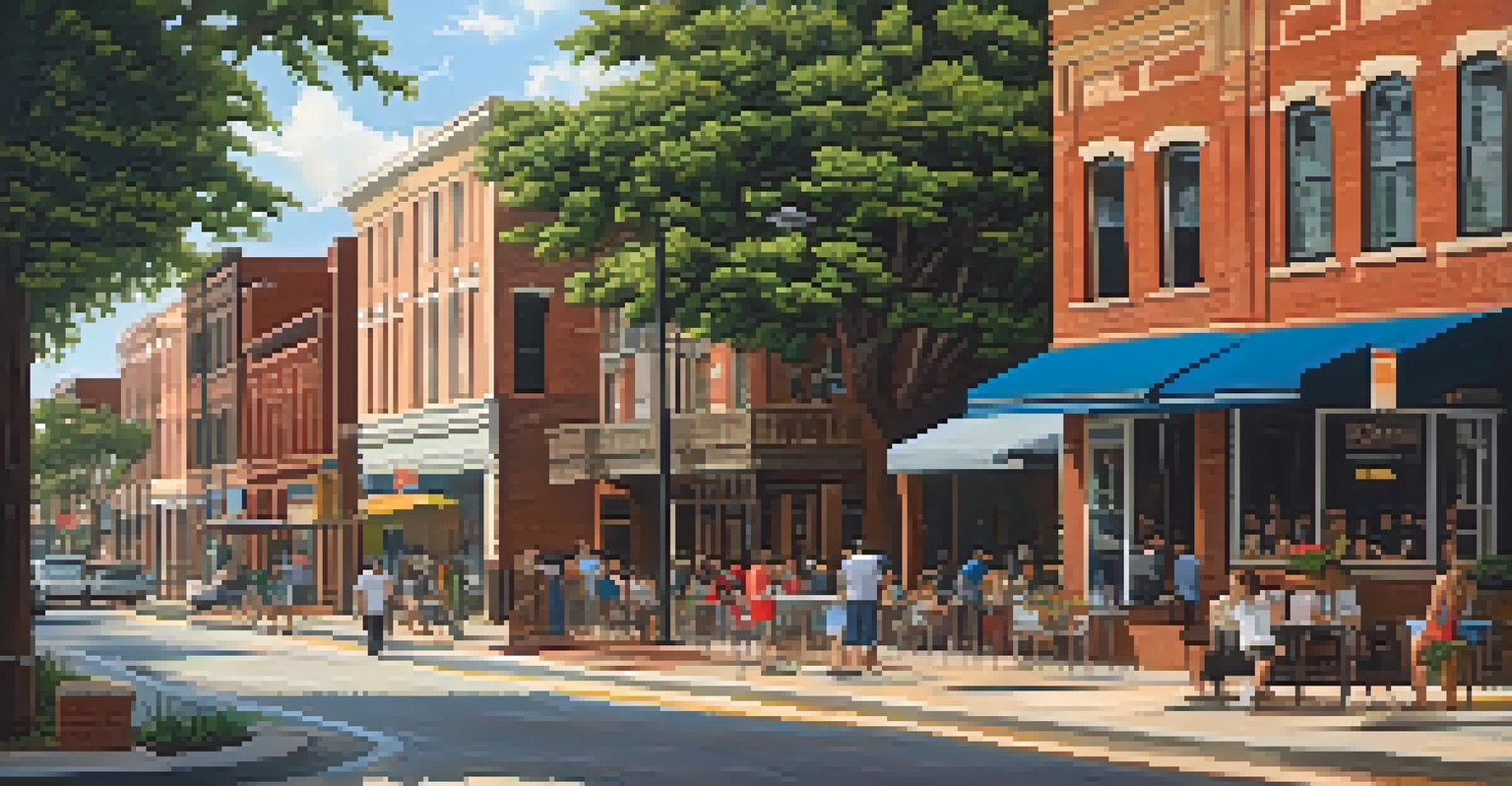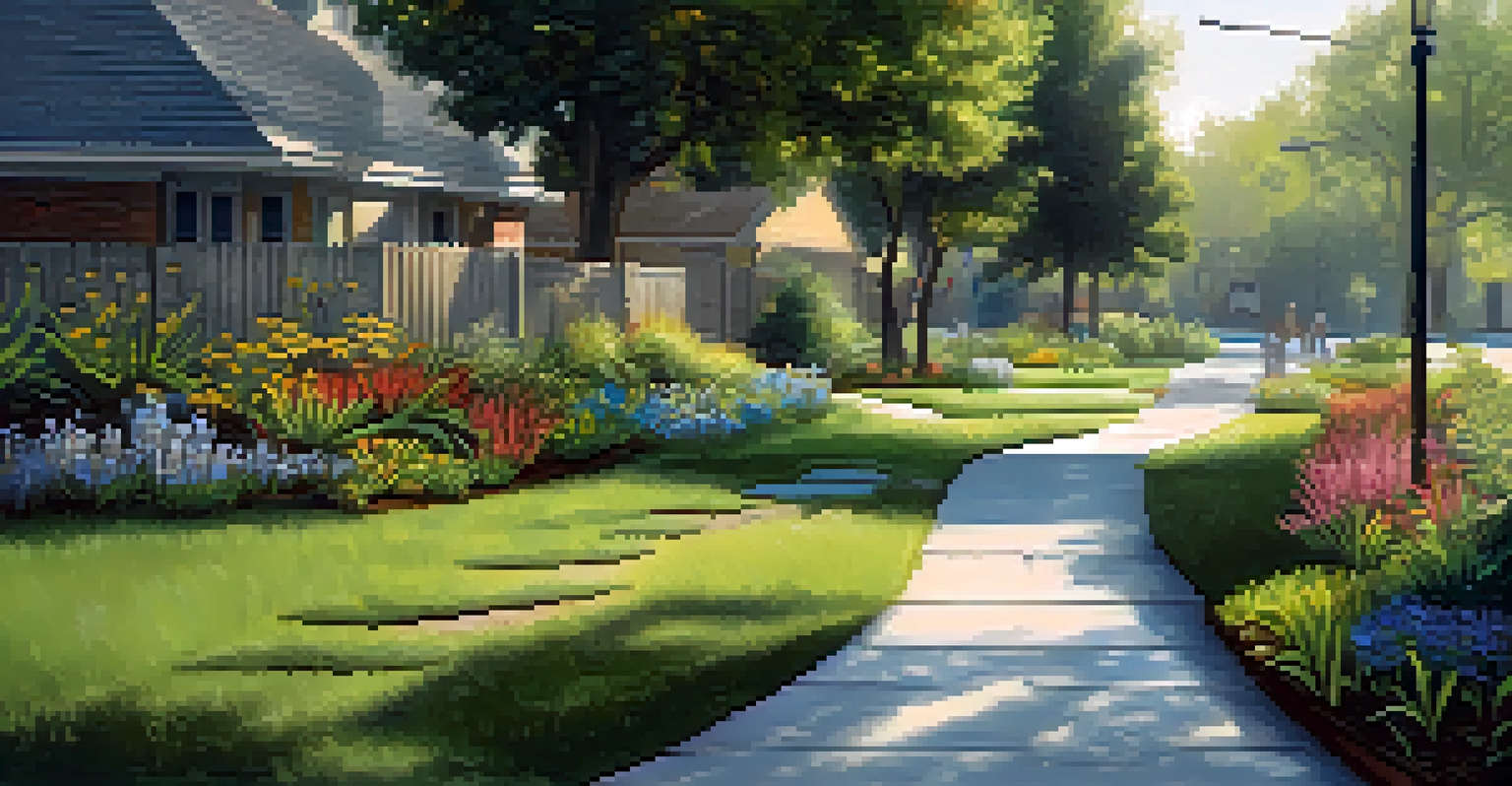Revitalization Projects Transforming Houston's Urban Landscape

The Importance of Urban Revitalization in Houston
Urban revitalization plays a crucial role in enhancing the quality of life in cities. In Houston, these projects aim to breathe new life into neglected areas, turning them into vibrant community hubs. By revitalizing urban spaces, cities can attract new businesses, residents, and tourists, fostering economic growth and sustainability.
The city is a living organism. It needs to breathe, move, and grow. Urban revitalization is essential to its health and vitality.
In Houston, this transformation is particularly vital given the city's rapid population growth and diverse neighborhoods. Revitalization projects not only improve infrastructure but also create spaces for social interaction, culture, and recreation. As neighborhoods evolve, they become more appealing to families and young professionals, further driving community engagement.
Moreover, revitalization efforts often focus on sustainability, integrating green spaces and eco-friendly designs. This approach not only beautifies the city but also promotes healthier lifestyles and environmental responsibility. The result is a more dynamic urban landscape that benefits everyone.
Key Revitalization Projects in Houston
Houston boasts several notable revitalization projects that are reshaping its urban landscape. One such project is the redevelopment of the historic East End, where new parks, restaurants, and cultural spaces are emerging. This area, once overlooked, is now becoming a vibrant destination for both locals and visitors.

Another significant initiative is the Buffalo Bayou Park project, which transformed an underutilized stretch of land into a stunning park that stretches for miles along the bayou. This project not only provides recreational opportunities but also improves flood control and enhances biodiversity in the area.
Revitalization Enhances Community Life
Urban revitalization projects in Houston are transforming neglected areas into vibrant spaces that improve quality of life and foster economic growth.
These projects exemplify Houston's commitment to revitalization and community improvement. By focusing on both aesthetics and functionality, they create spaces that encourage social interaction and foster a sense of belonging among residents.
Community Involvement in Revitalization Efforts
One key factor in successful revitalization projects is community involvement. Residents’ input helps ensure that developments reflect the needs and desires of those who live in the area. In Houston, local organizations and neighborhood associations often collaborate with city planners, creating a sense of ownership among community members.
Revitalization is not just about building new structures, but about creating spaces where communities can thrive and cultures can flourish.
For example, the Third Ward’s revitalization initiatives have included extensive community outreach, allowing residents to express their visions for the future. This engagement not only empowers residents but also helps build trust between the community and city officials, fostering a collaborative spirit.
Ultimately, when communities are involved in the revitalization process, the outcomes are more likely to resonate with local values and culture. This leads to a more authentic and meaningful transformation of urban spaces.
Sustainable Practices in Urban Revitalization
Incorporating sustainable practices is a hallmark of many revitalization projects in Houston. Planners are increasingly focusing on eco-friendly designs, energy-efficient buildings, and green spaces that promote biodiversity. This shift not only enhances the aesthetic appeal of the city but also addresses pressing environmental concerns.
The use of permeable pavements, green roofs, and rain gardens are just a few examples of how sustainability is being integrated into urban design. These features help manage stormwater, reduce urban heat, and improve air quality, making the city more resilient to climate change.
Community Involvement is Key
Successful revitalization relies on community engagement, ensuring that developments reflect the desires of local residents and strengthen their sense of ownership.
Sustainable urban revitalization is not just beneficial for the environment; it also attracts businesses and residents who prioritize eco-friendly living. As Houston continues to grow, these practices will play a crucial role in shaping a livable, thriving urban landscape.
Cultural Revitalization: Preserving Houston's Heritage
Cultural revitalization is an integral component of urban renewal in Houston. Many projects focus on preserving the city’s rich history while integrating modern amenities. This balance between the old and new fosters a unique identity that reflects the diverse cultures within the city.
For instance, the restoration of historic buildings in neighborhoods like Midtown and the Heights showcases Houston's architectural heritage. These efforts not only honor the past but also provide new opportunities for businesses, galleries, and community spaces that celebrate local culture.
By embracing cultural revitalization, Houston is creating an environment where history and modernity coexist harmoniously. This approach not only attracts tourists but also cultivates pride among residents, contributing to a vibrant city atmosphere.
The Role of Technology in Urban Revitalization
Technology is playing an increasingly significant role in revitalizing urban spaces across Houston. From smart city initiatives to innovative building designs, tech is helping to create more efficient and connected communities. These advancements enhance the overall quality of life for residents and visitors alike.
For example, the integration of smart infrastructure, such as sensors for monitoring air quality and traffic patterns, allows city planners to make data-driven decisions. This leads to improvements in public safety, transportation, and environmental sustainability.
Sustainability Drives Urban Design
Incorporating eco-friendly practices into revitalization projects not only beautifies the city but also promotes environmental responsibility and resilience.
Additionally, technology facilitates greater community engagement through apps and platforms that allow residents to voice their opinions and participate in city planning. By leveraging technology in revitalization efforts, Houston is paving the way for a more connected and responsive urban environment.
Future Outlook: What Lies Ahead for Houston's Urban Landscape
As revitalization projects continue to reshape Houston, the future looks promising for the city’s urban landscape. Ongoing efforts aim to create more inclusive, sustainable, and vibrant communities that cater to the needs of all residents. The focus on collaboration and community involvement is likely to yield positive outcomes in the years to come.
With the city’s diverse population and rich cultural heritage, there is immense potential for unique neighborhood developments. Future projects will likely emphasize the importance of preserving local identity while fostering innovation and growth.

As Houston moves forward, the lessons learned from current revitalization efforts will serve as a blueprint for creating a more livable city. The commitment to urban improvement ensures that Houston will continue to evolve into a dynamic urban center that reflects the aspirations of its residents.